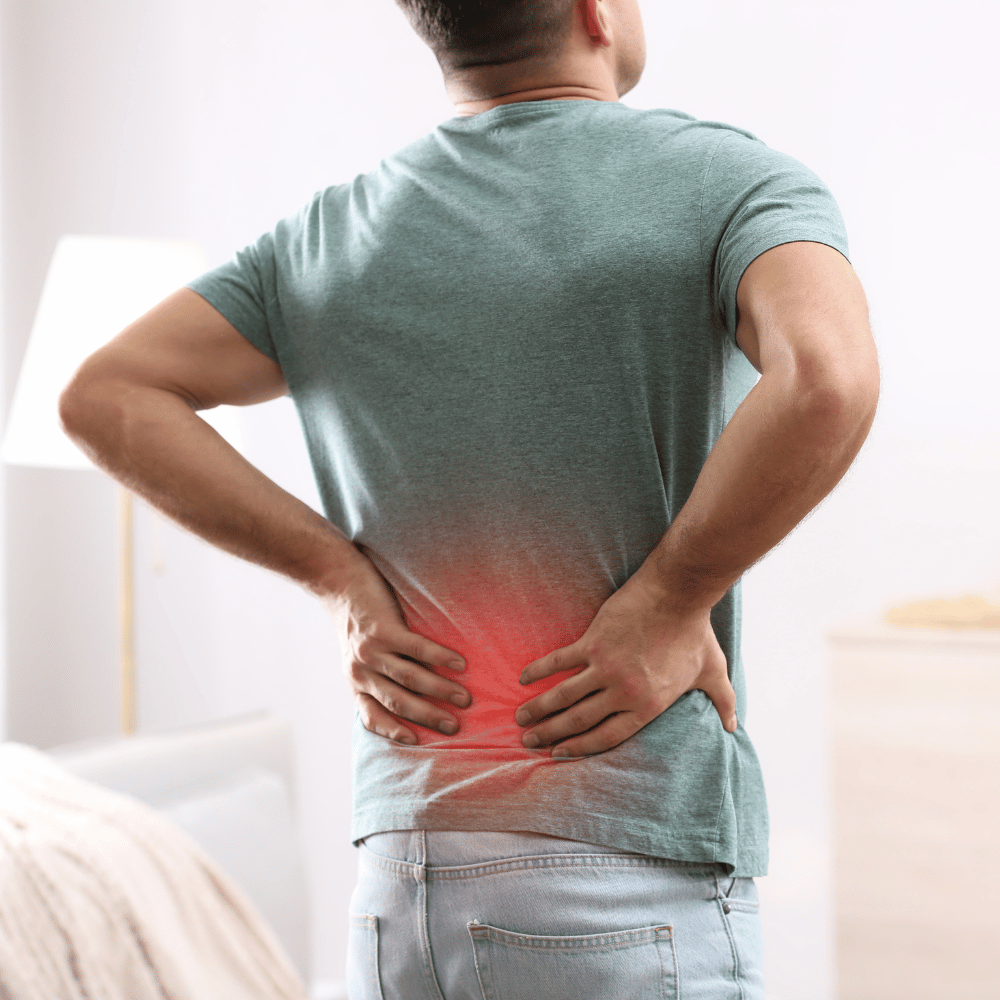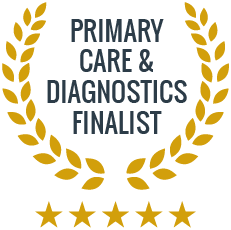
From Marathon Runner to Chronic Knee Pain
This is Tony’s story. He came to us with ongoing knee pain that worsened at work.
Conditions > Back Pain
Back pain is an unfortunately common issue, affecting most people at some point in their lives.
Whether you are grappling with chronic discomfort or recovering from a recent injury, our team of experts is here to help you find relief and get back to living your best life.




The back is a complex structure involving muscles, bones, nerves, and joints, which means that back pain can have many different causes, ranging from traumatic injury to stress.
Low back pain, also known as lumbago, is the most common type of back pain. However, you might experience pain anywhere along the spine, including the hips or neck.
Back pain can result from postural issues triggered by sitting or standing for long periods, bending awkwardly, or lifting something heavy without proper alignment. It is usually not related to a serious condition and may be a short-term complaint lasting weeks or months.
In some cases, the pain can be chronic, with long-term or recurring episodes.
Preventing back pain is just as important as treating it. Here are some tips to help you avoid future issues:


Addressing back pain early can prevent more serious issues and lead to quicker, more effective recovery.
Early intervention helps prevent minor issues from progressing into chronic or severe conditions. Additionally, taking action promptly often results in faster relief, allowing you to return to your normal activities sooner.
Early care also helps avoid complications, such as permanent nerve damage or diminished mobility, and by starting treatment early enables more customised and effective care that addresses your specific symptoms and needs.
Proper ergonomics at work can prevent back pain and enhance productivity. To set up your workspace effectively, start with chair support. Use an adjustable chair with good lumbar support that allows your feet to rest flat on the floor.
Next, position your desk so that your elbows are at a 90-degree angle when typing. Your computer monitor should be at eye level to avoid straining your neck. Ensure your keyboard is close enough so that your wrists remain straight while typing.
Finally, take regular breaks to stand, stretch, and move around to reduce stiffness and fatigue.


Understanding your back pain begins with an accurate diagnosis. We start with a detailed discussion about your symptoms, medical history, and lifestyle factors. Our specialists then perform a thorough physical examination to assess your range of motion, strength, and pain levels.
Depending on your symptoms, we may use X-rays, MRI, or CT scans to get a clear picture of your spinal structures and identify any abnormalities. If needed, we might refer you to additional specialists for a more in-depth evaluation, ensuring a comprehensive approach to your care.
Once we have all the necessary information, we review the findings with you and discuss the best course of action.


We know how debilitating and frustrating back pain can be. We will take your concerns seriously, listen and act to help relieve the pain, understand the cause and help prevent future episodes.
Our experienced and caring doctors work with specialists, physiotherapists and London’s leading imaging centres to help create an integrated care approach for your back.
We work with experienced consultants & healthcare professionals who have received positive feedback from our patients, and with whom we have established long-term relationships.
Use our online booking engine or book your test by giving us a call.
On the online booking engine select the “appointment type” you need.
You will be seen by one of our friendly doctors or trained clinicians.
Latest Episode
Tune in to our podcast to explore the world of healthcare and learn from distinguished special guests. We cover everything from preventative measures to cutting-edge treatments so that you can stay informed and up-to-date on health-related things.

This is Tony’s story. He came to us with ongoing knee pain that worsened at work.

A lot is said about medical weight loss but we are here to debunk the myths for you.

This is Kate’s story. She visited us last year and saw great improvements in her health and quality of life.
Subscribe for latest updates & news


From same-day private GP and blood test appointments to visa medicals, a sexual and reproductive health clinic, and preventative health screenings, we are here to help.
Contact Us
Accepted Insurance Companies






Please note that Walk-in Clinic is a private medical centre & not an NHS service. Harley Walk-in Clinic Ltd company registration no. 07472804